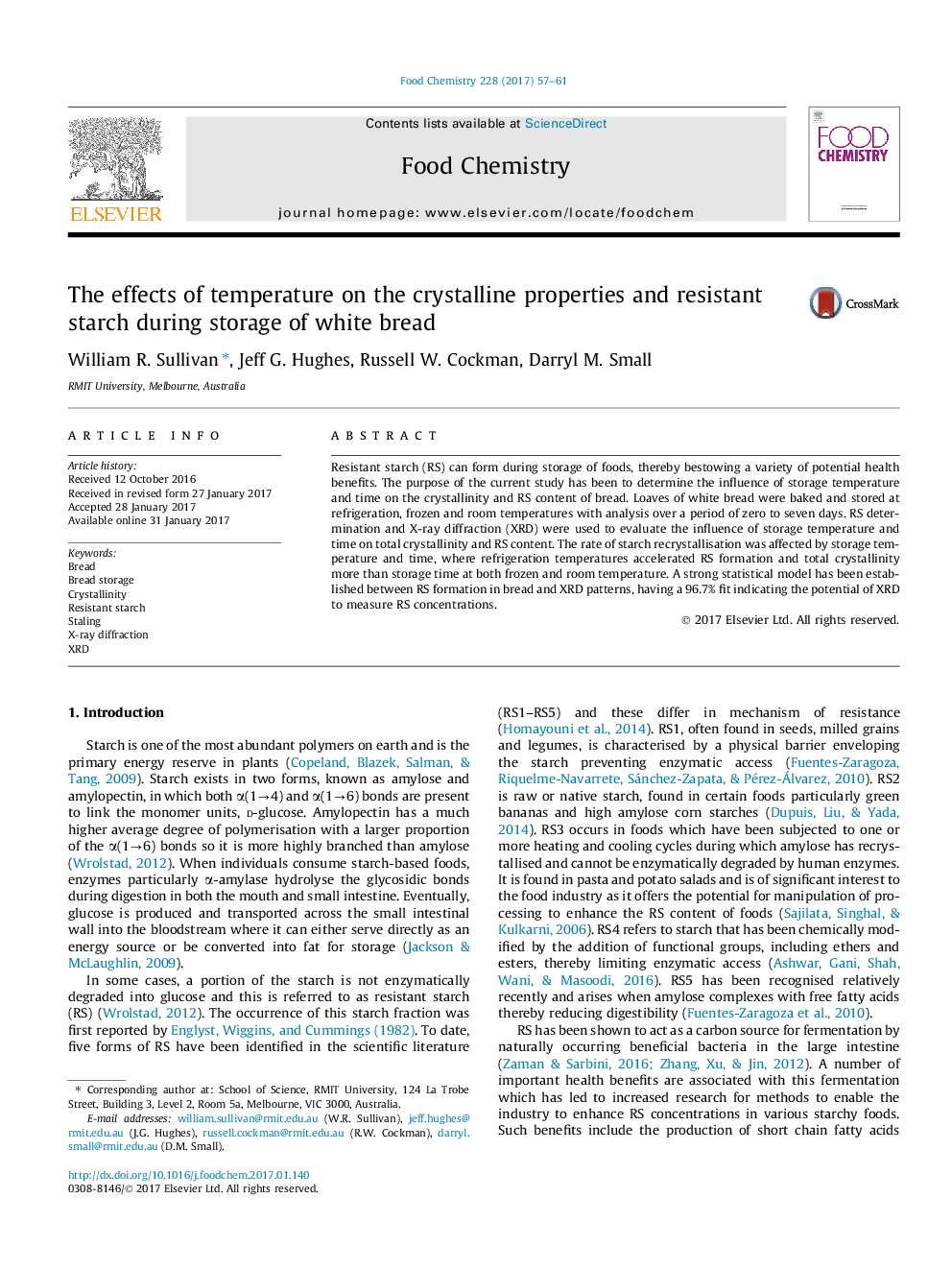| Article ID | Journal | Published Year | Pages | File Type |
|---|---|---|---|---|
| 5133817 | Food Chemistry | 2017 | 5 Pages |
â¢X-ray diffraction was used to analyse starch crystallinity of bread during storage.â¢Resistant starch (RS) content had the same pattern of increase as crystallinity.â¢RS formation was greater for refrigeration than ambient or frozen temperatures.â¢A strong statistical relationship between crystallinity with XRD and RS content was obtained.
Resistant starch (RS) can form during storage of foods, thereby bestowing a variety of potential health benefits. The purpose of the current study has been to determine the influence of storage temperature and time on the crystallinity and RS content of bread. Loaves of white bread were baked and stored at refrigeration, frozen and room temperatures with analysis over a period of zero to seven days. RS determination and X-ray diffraction (XRD) were used to evaluate the influence of storage temperature and time on total crystallinity and RS content. The rate of starch recrystallisation was affected by storage temperature and time, where refrigeration temperatures accelerated RS formation and total crystallinity more than storage time at both frozen and room temperature. A strong statistical model has been established between RS formation in bread and XRD patterns, having a 96.7% fit indicating the potential of XRD to measure RS concentrations.
